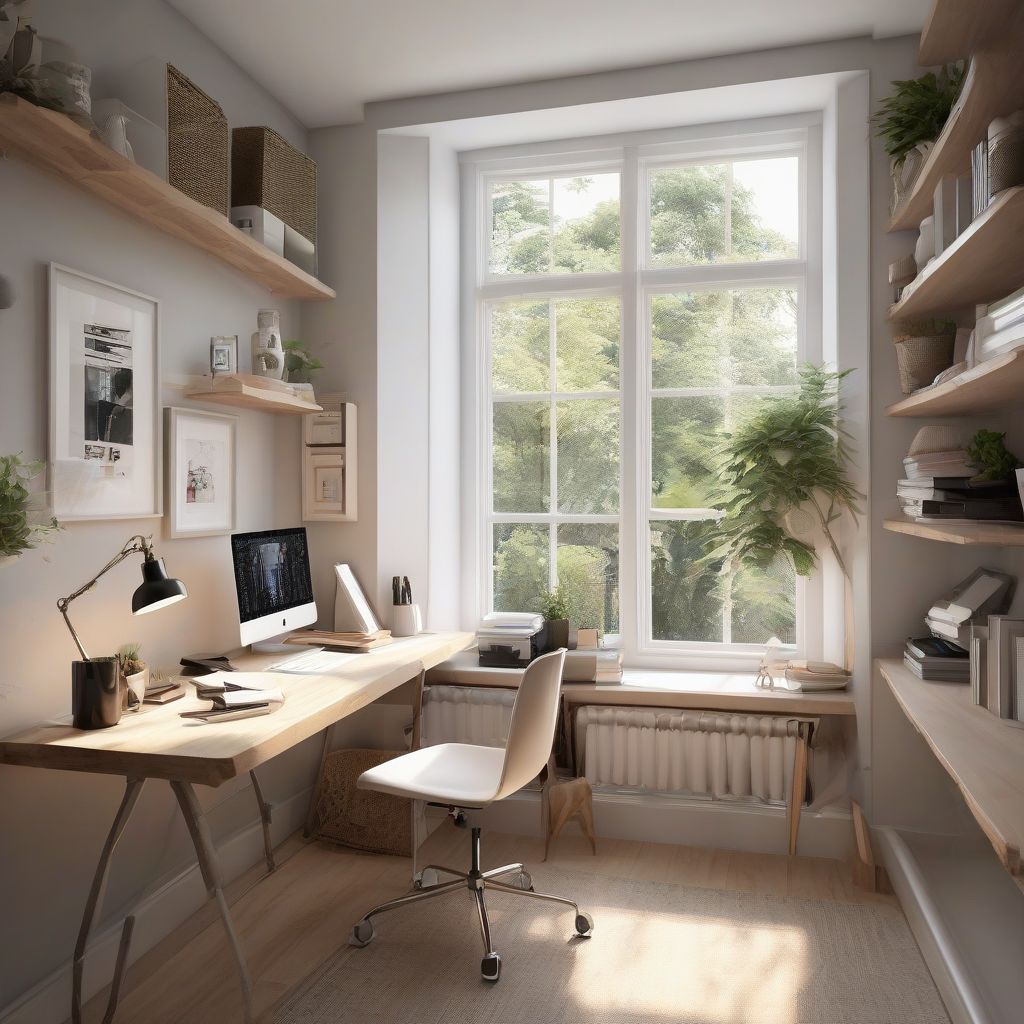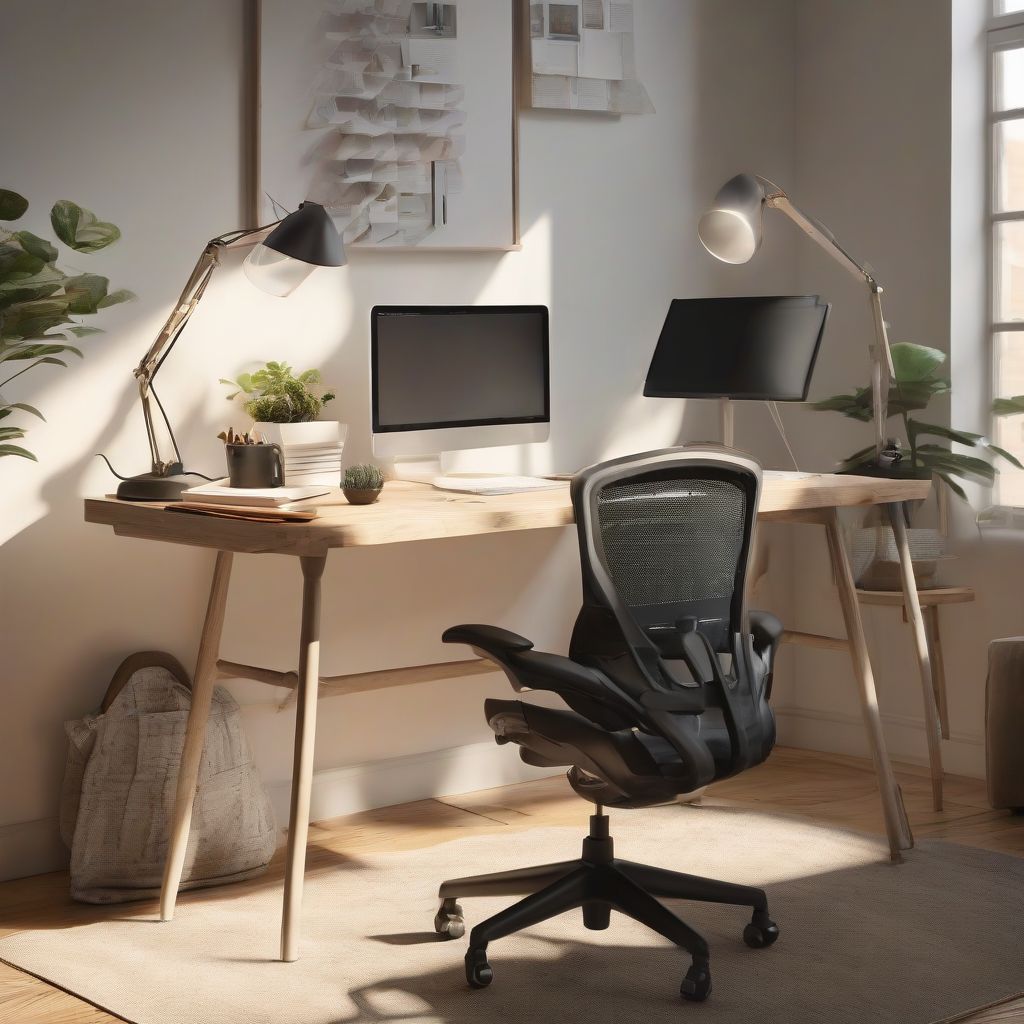Ever get to the end of your workday feeling like your eyes are fried? Or maybe you find yourself battling headaches more often than you’d like? While there are many contributors to these common ailments, your workspace lighting could be the hidden culprit.
We all know the importance of a good ergonomic chair and a properly adjusted monitor, but ergonomic lighting often gets overlooked. The truth is, proper lighting can make or break your workday, impacting not only your comfort but also your productivity and overall health.
This guide will walk you through everything you need to know about choosing the right ergonomic lighting for your workspace. We’ll explore different types of lighting, discuss common pitfalls to avoid, and offer practical tips to help you create a workspace that promotes well-being and helps you thrive.
Understanding the Importance of Ergonomic Lighting
Ergonomic lighting goes beyond simply illuminating your workspace. It’s about creating a lighting environment that works with your body’s natural rhythms and visual needs. Here’s why it matters:
1. Reduced Eye Strain: Improper lighting forces your eyes to work harder, leading to eye fatigue, dryness, and headaches. Ergonomic lighting minimizes glare and provides adequate illumination, reducing the strain on your eyes.
2. Improved Focus and Productivity: Have you ever noticed how natural light can make you feel more alert and energized? Well-designed lighting can mimic these effects, improving your concentration and productivity throughout the day.
3. Enhanced Mood and Well-being: Lighting plays a crucial role in regulating our circadian rhythm (our natural sleep-wake cycle). Exposure to bright light during the day and softer light in the evening can improve sleep quality, boost mood, and promote overall well-being.
 Natural Light in Workspace
Natural Light in Workspace
Types of Ergonomic Lighting
There are several types of lighting to consider when designing your ergonomic workspace:
1. Natural Light: The Gold Standard
Nothing beats natural light when it comes to creating a healthy and productive workspace.
- Benefits: Natural light helps regulate your circadian rhythm, reduces eye strain, and improves mood.
- How to Maximize It: Position your desk near a window to maximize natural light exposure. If you have limited natural light, consider adding a light therapy lamp to your workspace.
- Things to Consider: Direct sunlight can create glare on your computer screen, so you may need to adjust your workspace setup or use window coverings to diffuse the light.
2. Ambient Lighting: Setting the Foundation
Ambient lighting provides overall illumination for your workspace, ensuring that the space is well-lit and inviting.
- Types: Ceiling lights, pendant lights, track lighting
- Tips: Opt for diffused lighting that spreads evenly throughout the room. Choose bulbs with a color temperature of around 3000K, which provides a warm and inviting ambiance.
3. Task Lighting: Illuminating Your Work Area
Task lighting provides focused illumination for specific tasks, such as reading, writing, or working on a computer.
- Types: Desk lamps, floor lamps, under-cabinet lighting
- Tips: Choose a task light that can be easily adjusted to direct light where you need it most. Look for lamps with adjustable arms and brightness levels.
4. Accent Lighting: Adding Depth and Interest
While not directly related to ergonomics, accent lighting can enhance the overall aesthetics of your workspace and create a more pleasant environment.
- Types: Table lamps, wall sconces, string lights
- Tips: Use accent lighting to highlight artwork, plants, or other design features in your workspace.
Common Lighting Mistakes to Avoid
Now that you have a good understanding of the different types of lighting, let’s look at some common mistakes to avoid:
1. Relying Solely on Overhead Lighting: This creates harsh shadows, increases glare, and can lead to eye fatigue.
2. Choosing the Wrong Bulb Color Temperature: Bulbs with a high color temperature (above 5000K) emit a cool, blueish light that can disrupt your sleep cycle. Bulbs with a low color temperature (below 2700K) can create a warm, cozy ambiance but may not be ideal for working.
3. Ignoring Glare: Glare on your computer screen or other surfaces can strain your eyes and make it difficult to focus.
4. Neglecting Natural Light: Natural light is incredibly beneficial, so don’t neglect it! Position your workspace to take advantage of natural light whenever possible.
Pro Tips for Optimizing Your Workspace Lighting
- Use a combination of lighting types: Combine ambient, task, and accent lighting to create a well-lit and comfortable workspace.
- Adjust your lighting throughout the day: As natural light changes, adjust your artificial lighting accordingly. Consider using a dimmer switch to control the brightness of your lights.
- Choose bulbs with a high CRI (Color Rendering Index): CRI measures a light bulb’s ability to accurately render colors. Look for bulbs with a CRI of 80 or higher.
- Take breaks to rest your eyes: Follow the 20-20-20 rule: Every 20 minutes, look at something 20 feet away for 20 seconds.
- Consider investing in blue light blocking glasses: Blue light emitted from electronic devices can interfere with sleep. Blue light blocking glasses can help reduce your exposure, especially in the evening.
 Ergonomic Desk Setup
Ergonomic Desk Setup
Conclusion
Choosing the right ergonomic lighting is an investment in your health, well-being, and productivity. By understanding the different types of lighting, avoiding common mistakes, and following the tips outlined in this guide, you can create a workspace that supports your overall wellness and helps you thrive.
Remember, small changes can make a big difference when it comes to ergonomic lighting. So, take some time to assess your current workspace and see how you can improve the lighting to create a more comfortable and productive environment.
Want to learn more about creating a healthy and ergonomic workspace? Check out these related articles:
- How to Create a Home Office That Supports Ergonomic Health
- The Best Monitors and Display Options for a Home Workspace
Do you have any questions about ergonomic lighting or creating a healthy workspace? Share your thoughts in the comments below!
[amazon bestseller=”desk lamp”]
